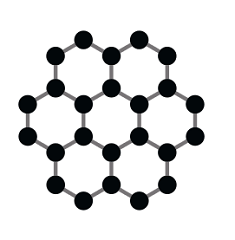Are you curious what happened last year in the field of chemistry? Would you like to learn about the latest inventions and research that may soon revolutionize our world? We present a summary of the most important events in 2018. Take a look!

What scientific discoveries did 2018 bring?
Once again, science has proven that there are many more secrets to be discovered and only the most persistent researchers can achieve this. We have selected 10 most interesting discoveries, including the development of new methods of transporting drugs, increasing mass storage, and even the transformation of hydrogen into liquid.


A NEW METHOD OF NANOFIBRE FORMATION
Scientists from the Massachusetts Institute of Technology have developed a method of creating stronger and more resilient nanofibres than those known to date. They can be used in numerous applications. The process in which nanofibres are formed is called gel-electrospinning. As a result, the thinnest fibres made of polyethylene are obtained. They are more durable than the strongest known fibrous materials such as Kevlar and Dyneema for bullet-proof vests. Additional advantages of these new nanofibres are increased hardness parameters and lower density compared to carbon or ceramic fibres. [1]

INNOVATIVE DRUG DELIVERY SYSTEM
Researchers from the University of Washington published information on the construction and testing of a new system for the supply of medicines based on biomaterials such as hydrogels. This system releases the drug only under certain physiological conditions and precisely at the place of infection. Thanks to the use of biomaterials, the drug is applied to the appropriate organ, reducing the side effects of standard pharmaceuticals on patients.[2]

GRAPHENE AS INSULATOR AND SUPERCONDUCTOR
Scientists from the Massachusetts Institute of Technology and Harvard described the phenomenon of graphene. Under certain conditions, graphene acts as an insulator or as a superconductor. Researchers have proven that this lightweight, flexible and thinnest material known in the world has highly interesting properties. It has the ability to behave differently at two electrical extremes: as an insulator, in which electrons are completely blocked from flowing; and as a superconductor, in which electrical current can stream through without resistance. The graphene feature was noticed after the creation of a superlattice of two graphene sheets stacked on top of each other and rotated at an angle of 1.1 degrees.[3]

DISCOVERY OF DEPOSITS OF RARE-EARTH ELEMENTS
Japanese scientists have announced the discovery of centuries-old, huge amounts of rare earth elements in the deep seabed of the Northwestern Pacific Ocean. The discovery of 16 million tonnes of rare earth oxides in the depths of the Pacific Ocean has the potential to supply the world with this material for 600 years. Rare earth elements are a key raw material used in the production of technologically advanced equipment such as electric cars, telephones and batteries.[4]

A NEW TECHNIQUE TO INCREASE THE MEMORY OF THE COMPUTER
Researchers from Alberta University, Canada, reported the discovery of a new technique to increase computer storage. The method developed by researchers is based on rapid removal or replacement of single hydrogen atoms, which allows for a thousand-fold increase in the density of semiconductor memory. This discovery enables creating a computer storage that runs at real-world temperatures and can be normally used, something that was previously impossible to achieve in the nano-fabrication industry.[5]

CONVERSION OF GASEOUS DEUTERIUM INTO A METALLIC LIQUID
Researchers from one of the leading U.S. research institutes in California, Lawrence Livermore National Laboratory, have announced the transformation of gaseous deuterium into a metallic liquid. This discovery can help researchers better understand giant gas planets such as Jupiter and Saturn. According to scientists, these planets contain a lot of liquid metallic hydrogen, which can be responsible for the observed strong magnetic fields. Hydrogen is liquefied from the ultra-pure deuterium using laser pulses.[6]

THE MOST RESISTANT METAL IN THE WORLD
Scientists from Sandia National Laboratories have developed a platinum-gold alloy considered to be the most wear-resistant metal in the world. Platinum-gold alloy is 100 times more durable than high strength steel. This discovery can be used in electronics. Thanks to the properties of the material, the components of the devices could be reliable and long-lasting. Researchers see the potential in applications both in large aircraft systems and wind turbines, as well as in mobile phones and radars. In addition, the alloy spontaneously synthesizes diamond-like carbon on its surface – one of the best coatings in the world, which is as smooth as graphite and as hard as diamond.[7]

NOBEL PRIZE IN CHEMISTRY
George P. Smith from the United States, Frances H. Arnold from the United States and Gregory P. Winter from the United Kingdom received the Nobel Prize in Chemistry for their work in the field of evolutionary sciences. Scientists have developed a method of catalysis of enzymes based on controlled evolution. Thanks to this discovery it will be possible to produce enzymes and antibodies which can be used to produce medicines and biofuels. This method consists in selecting a single gene encoding a specific protein and subjecting it to mutation, and then selecting and reproducing it. This cycle is repeated until the gene acquires the desired characteristics.[8]

REDEFINITION OF SI BASE UNITS
The 26th General Conference on Weights and Measures was held on 16 November and voted on redefinition of SI base units. The redefinition was proposed by the International Committee on Weights and Measures (CIPM) at the beginning of 2018.The proposals concerned the redefinition of the kilogram, ampere, kelvin and mole units. The redefinition will apply from 20 May 2019. The new definitions of units are based on constants which result from the laws of physics.[9]

PRODUCTION OF BIOPLASTICS FROM SEAWEED
Researchers from Tel Aviv University have described the process of bio-plastics production from aquatic microorganisms feeding on seaweed. The polymers that can be used for the production of bioplastics are derived from algae consuming single-cell micro-organisms that, together with the seaweed, live in very salty water. The resulting plastics are biodegradable, do not generate toxic substances, and their decomposition products are organic compounds. The discovery of scientists solves the problem of producing biodegradable plastics from plants or bacteria in countries that do not have access to fertile soil or fresh water, such as Israel.[10]
[1] http://news.mit.edu/2018/ultrafine-fibers-have-exceptional-strength-0105
[2] http://www.washington.edu/news/2018/01/16/researchers-program-biomaterials-with-logic-gates-that-release-therapeutics-in-response-to-environmental-triggers/
[3] https://www.nature.com/articles/d41586-018-02773-w
[4] https://www.cnbc.com/2018/04/12/japan-rare-earths-huge-deposit-of-metals-found-in-pacific.html
[5] https://www.sciencedaily.com/releases/2018/07/180723132055.htm
[6] https://www.nytimes.com/2018/08/16/science/metallic-hydrogen-lasers.html
[7] https://share-ng.sandia.gov/news/resources/news_releases/resistant_alloy/
[8] https://old.nobelprize.org/che-press.pdf?_ga=2.67876817.1135025470.1538548911-1481862404.1538548911
[9] https://www.nytimes.com/2018/11/16/science/kilogram-physics-measurement.html
[10] https://phys.org/news/2018-12-sustainable-plastics-horizon.html
